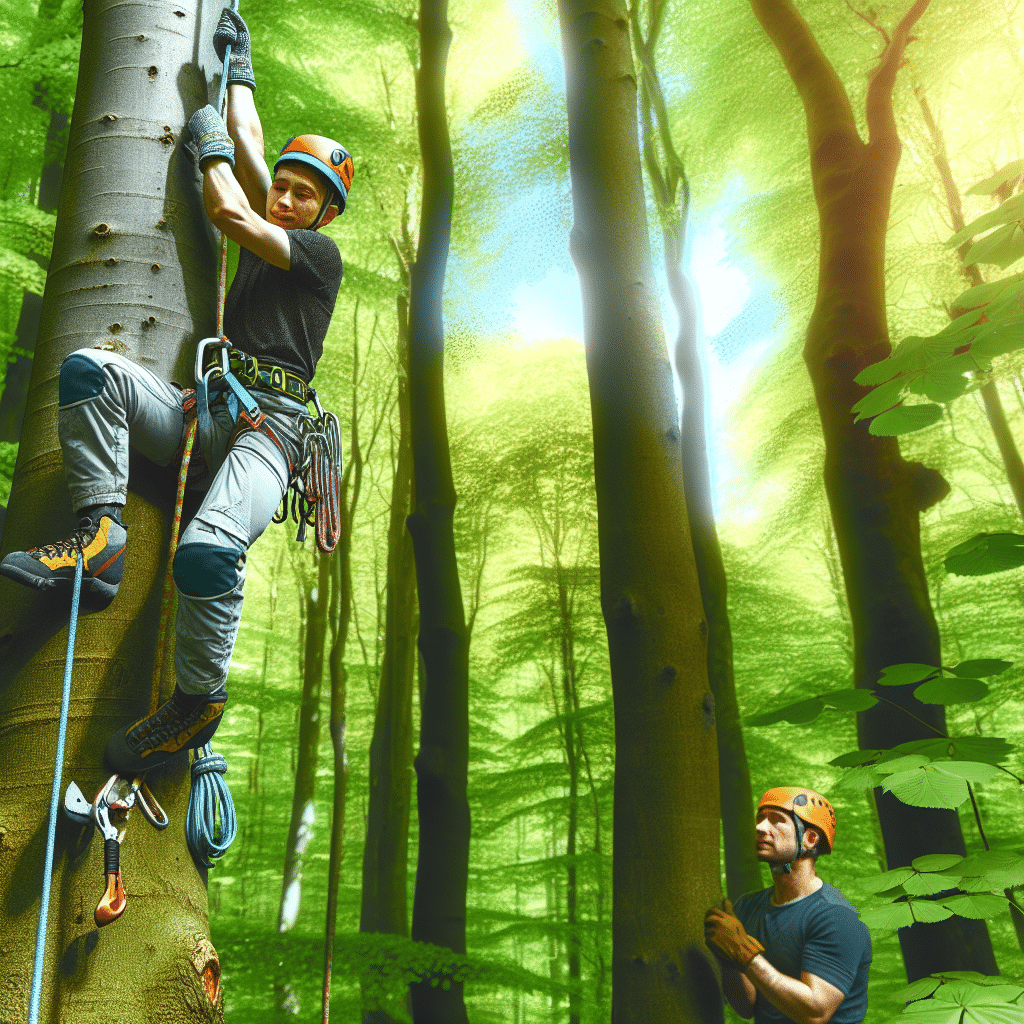Tree climbing may seem like an adventurous activity reserved for kids, but it’s a skill that provides numerous benefits to individuals of all ages. Whether you’re a professional arborist, an outdoor enthusiast, or someone looking to improve physical fitness and coordination, tree climbing training can be incredibly rewarding. This article will guide you through the essential aspects of tree climbing training, ensuring you can safely and confidently ascend to new heights.
Why Should You Consider Tree Climbing Training?
Tree climbing training is not just about scaling trees; it’s about honing your physical and mental prowess. Here are some compelling reasons to consider it:
Fitness and Strength
Tree climbing is an excellent full-body workout. It enhances your cardiovascular health, builds muscle strength, and improves flexibility. The act of climbing mimics natural, functional movements, making it an ideal form of exercise.
Mental Health
Reconnecting with nature and working at heights can have a calming effect, reducing stress and anxiety. The focus required for safe climbing also improves mental clarity and concentration.
Professional Skills
For those in industries like arboriculture, forestry, or even rescue operations, tree climbing training is a vital skill. It ensures safety and efficiency in tasks that involve working at height.
What Equipment Do You Need for Tree Climbing Training?
Before you start, having the right gear is crucial for your safety and performance.
Climbing Harness
A good-quality climbing harness should be your first investment. It secures you to the rope and provides support during the climb. Look for harnesses designed specifically for tree climbing as they offer more comfort and safety features.
Rope
Not just any rope will do. Dynamic ropes, which stretch under tension, are ideal for tree climbing. They absorb the impact of a fall, reducing the risk of injury.
Carabiners and Ascenders
Carabiners and ascenders are essential for managing your rope and ensuring a secure climb. Make sure to use climbing-rated gear to guarantee strength and reliability.
Steps to Begin Your Tree Climbing Training
Choose the Right Tree
Begin with a healthy, sturdy tree that has strong branches and is free of hazards like dead limbs or electrical wires.
Learn Basic Knots
Mastering knots such as the bowline, figure-eight, and clove hitch is essential for secure climbing. These knots are fundamental in ensuring that your rope setup is safe and reliable.
Start Low and Slow
Begin your training by practicing low climbs. Focus on perfecting your technique before attempting higher ascents. Gradually increase the height as you become more comfortable and confident.
Take a Course
Consider enrolling in a tree climbing training course. Certified instructors can offer practical insights and safety tips that are invaluable, especially for beginners.
Safety Tips: What Should You Always Remember?
Safety is paramount in any climbing activity. Here are some essential tips:
Inspect Your Equipment
Before every climb, thoroughly inspect your gear for any signs of wear and tear. Replace any damaged equipment immediately.
Use Protective Gear
Always wear a helmet and gloves to protect yourself from falling debris and abrasions.
Climb with a Partner
Never climb alone. Having a partner ensures that someone is available to assist in case of an emergency.
Follow Protocols
Whether you’re climbing recreationally or professionally, always adhere to the safety protocols and guidelines set forth by relevant authorities.
Conclusion
Tree climbing training is an exhilarating and beneficial activity that offers a unique blend of physical exercise, mental focus, and professional skill development. With the right training, equipment, and safety measures, you can master the art of tree climbing and enjoy all the rewards it has to offer. So, gear up, and start your ascent towards mastering the heights!
By integrating these steps into your practice, you’ll find tree climbing to be not just a physical challenge, but a highly rewarding experience that connects you with nature in a profound way. Happy Climbing!




